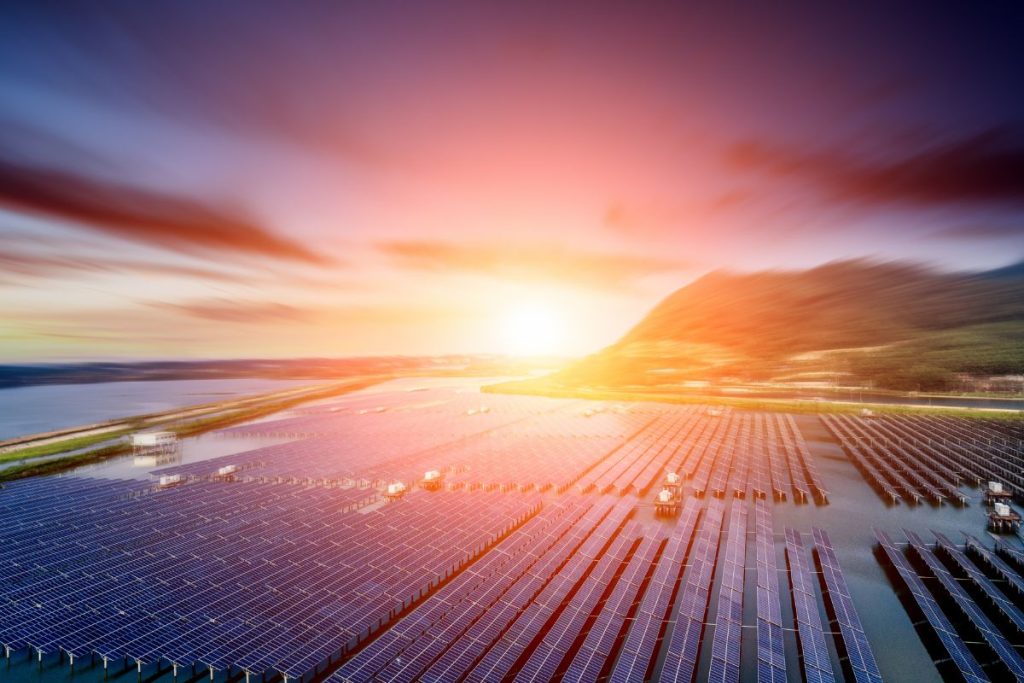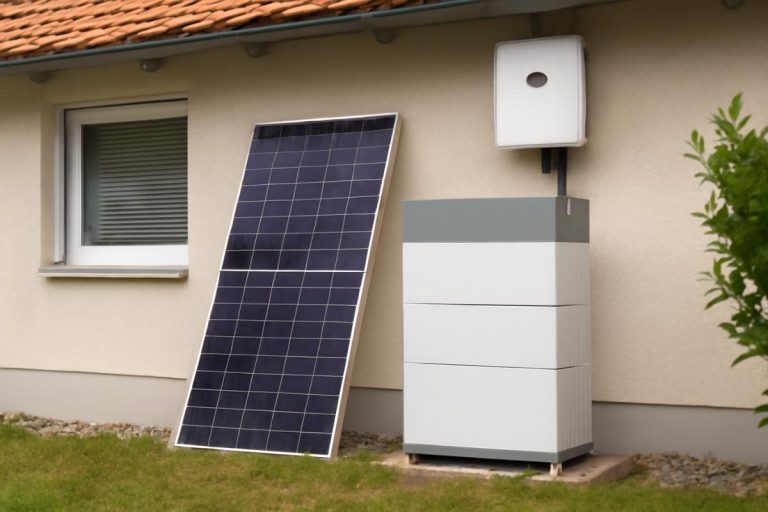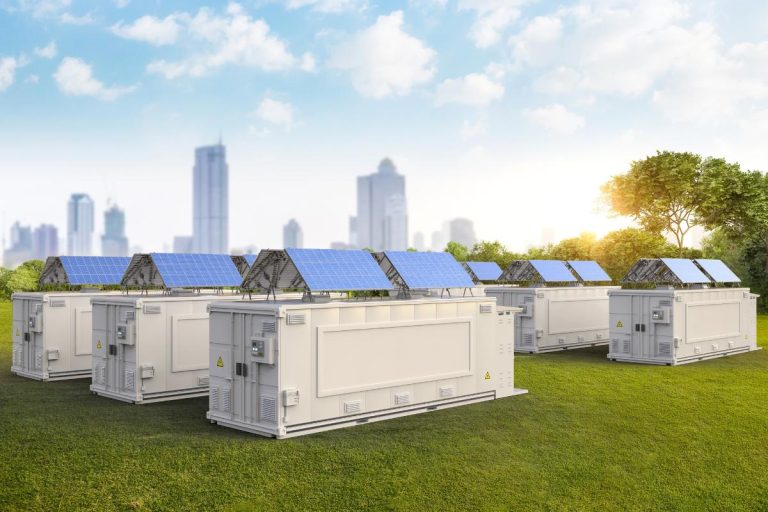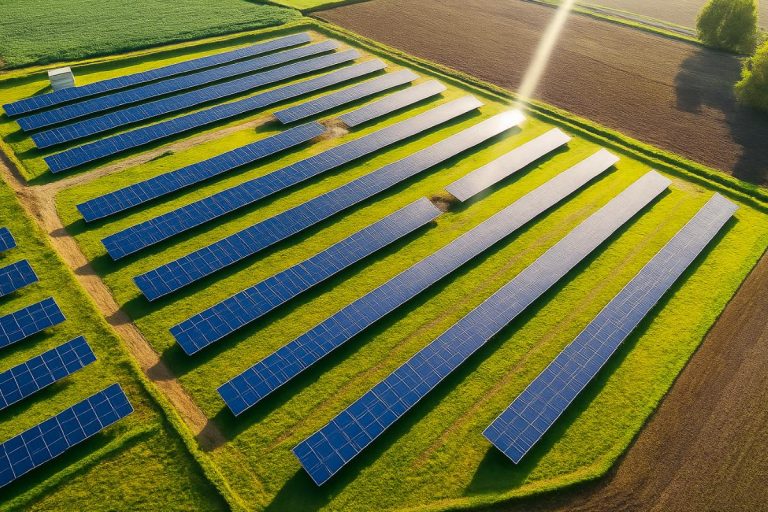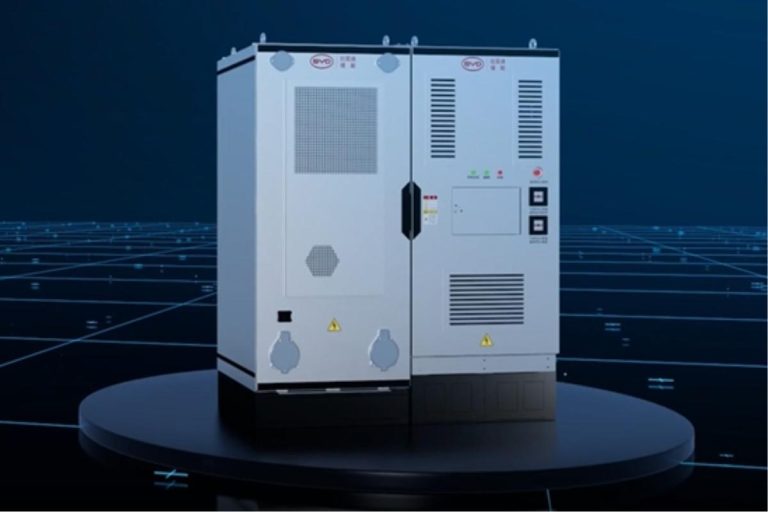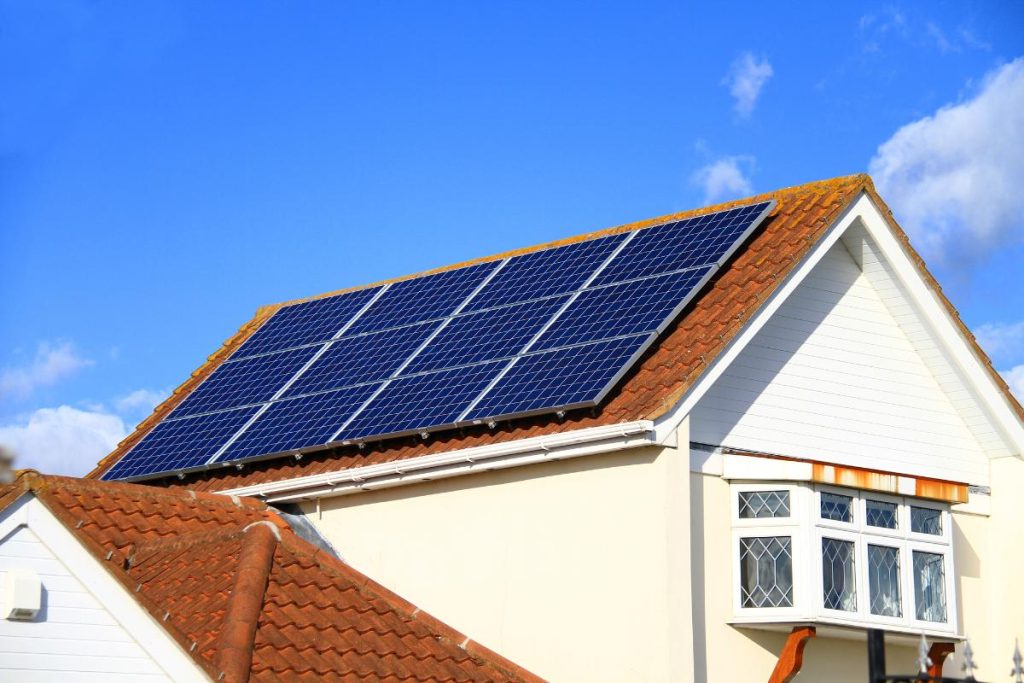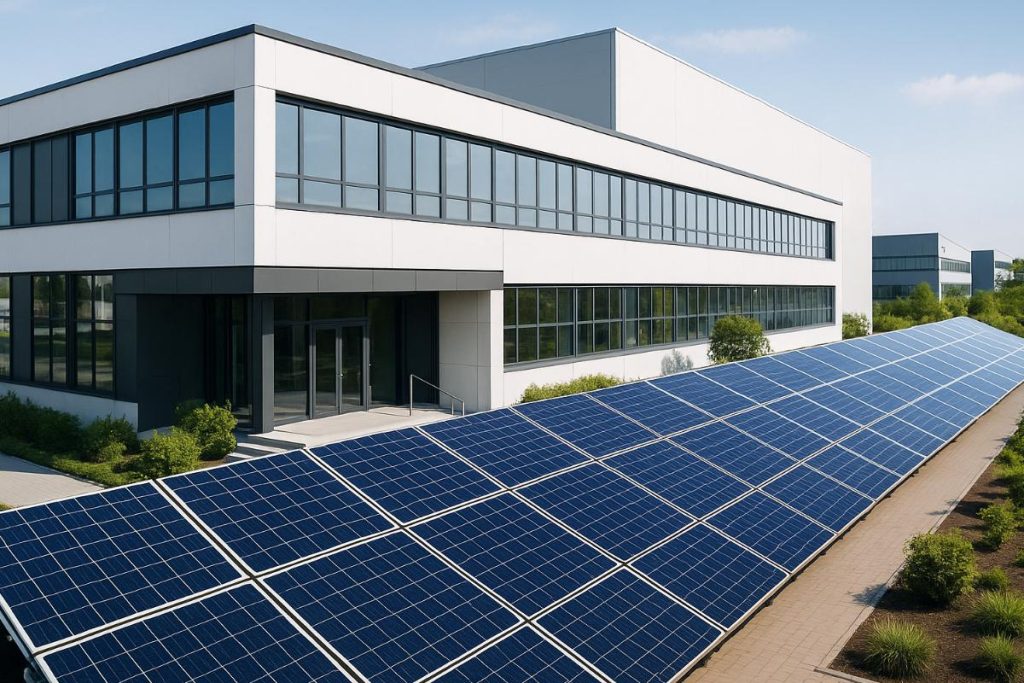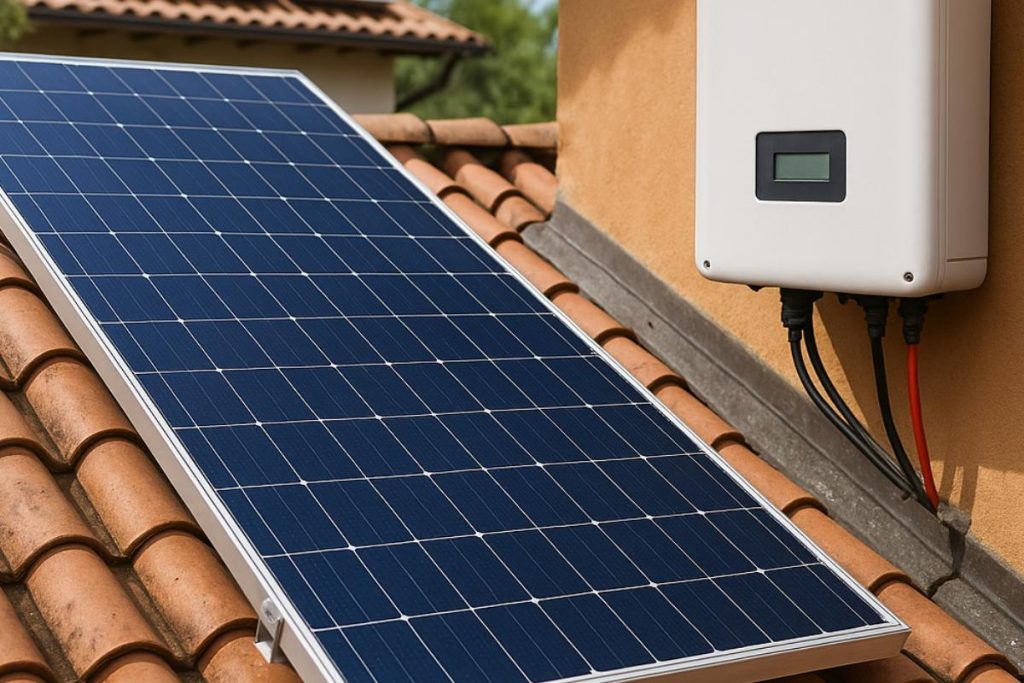A system that transforms sunlight into a constant source of savings and sustainability for your home or business: the solar energy is not just a technology of the future, it is already changing the way millions of people manage their energy consumption, reducing costs and having a positive impact on the environment.
As concern for the planet grows, so does the search for practical and efficient solutions. However, there are still many doubts about how solar energy really works, its cost-effectiveness and the real environmental gains it can provide.
In this article, you'll find out why solar energy could be the decisive step towards a more economical and sustainable future.
What is solar energy?
A solar energy is energy generated from the sun's radiation, a natural, inexhaustible source that is widely available in practically every region of the planet. It is one of the cleanest and most sustainable forms of energy production, as it does not depend on burning fossil fuels and does not emit polluting gases that contribute to global warming.
The process of harnessing solar energy takes place mainly through the photovoltaic systems. These systems are made up of solar panels, installed on roofs, land or other surfaces that receive good sunlight. The panels contain photovoltaic cells that capture solar radiation and convert this light into electricity through the photovoltaic effect.
How does solar energy work?
The way solar energy works is simple, but it involves advanced technologies that guarantee efficiency and versatility in the use of the electricity generated. The solar panelsSolar panels, usually installed on roofs or in open areas that receive a lot of sunlight, act as collectors that capture solar radiation and convert it into electrical energy.
When the sun emits its rays, the photons of sunlight hit the photovoltaic cells present in the panels. These cells are made up of semiconductor materials, such as silicon, which absorb the photons' energy, releasing electrons and creating a continuous electric current, a phenomenon known as the photovoltaic effect.
The electricity generated, called direct current (DC), cannot be used directly by residential equipment or by the conventional electricity grid, which operates on alternating current (AC). For this reason, the energy passes through a device called a solar inverter, whose function is to convert direct current into alternating current, compatible with the standard used in homes, businesses and industries.
The converted electricity can be consumed immediately to power electrical appliances, lighting and various systems. When generation exceeds consumption, this energy can be sent to the electricity grid (in the case of connected systems, called on-grid), generating credits that can be used in periods of low generation. Alternatively, the energy can be stored in batteries for later use, ensuring a constant supply even at night or on cloudy days.
Benefits of solar energy
Solar energy is much more than a clean source of electricity, it generates a series of benefits that have a positive impact on the economy, the environment and society.
We can organize these benefits into three broad categories: economic, environmental and social, each contributing to a more sustainable and efficient future.
Economic benefits
One of the biggest attractions of photovoltaic solar energy is the significant reduction in electricity bills. By generating their own energy, residential and business consumers can considerably reduce their monthly electricity costs, and in many cases eliminate this expense altogether.
In addition to the direct savings, installing solar systems adds value to the property, making it more attractive on the real estate market and increasing its resale value. Another economic advantage lies in low maintenance: solar panels are robust and durable equipment, requiring little care and generating reduced operating costs over the years.
The return of investment in solar energy on average between four and seven years, depending on location, system size and consumption. After this period, the energy produced represents an almost zero cost, providing one of the best rates of financial return in the energy sector.
Environmental benefits
As a renewable and clean source, solar energy plays a crucial role in reducing greenhouse gas emissions, contributing to the fight against climate change. The electricity generated by solar panels does not emit carbon dioxide (CO₂) or other pollutants, unlike traditional fossil sources such as oil and coal.
In addition, the use of solar energy helps to preserve non-renewable natural resources, such as water and fossil fuels, which are highly demanded in other forms of energy generation. By investing in solar energy, you are helping to build a more sustainable and balanced energy matrix.
Social benefits
A adoption of solar energy also has positive social impacts. With greater energy independence, consumers are less vulnerable to fluctuations and increases in utility tariffs, providing greater financial stability and security of supply.
The expansion of the solar sector boosts job creation in various areas, from equipment manufacturing to installation, maintenance and related services, benefiting the local and national economy.
What's more, by choosing solar energy, you become an agent of social change, encouraging environmental awareness in your community and inspiring other people and organizations to adopt more sustainable practices.
Types of solar energy systems
There are different types of solar energy systems available on the market. The main ones are on-grid systems, which are connected to the electricity grid, and off-grid systems, which work independently, without connection to the grid.
Let's get to know each of them better:
| Type of system | Features | Advantages | Disadvantages |
| On-grid | Connected to the public electricity grid. | Possibility of selling the surplus energy generated to the concessionaire. | Shorter power supply in the event of a blackout on the public grid. |
| It uses the grid as a "backup" when solar energy production is insufficient. | Lower initial cost compared to off-grid systems. | It needs the public electricity grid to store or dispose of the surplus energy generated, and is subject to grid instability. | |
| Common in urban areas. | Greater savings on electricity bills due to the exchange of energy with the grid. | It needs approval and contracts with the local utility. | |
| Off-grid | Not connected to the public electricity grid, operating autonomously. | Total energy independence, ideal for remote locations or those without access to the mains. | Higher initial cost due to the need for batteries for energy storage. |
| It stores the energy generated in batteries for later use. | It works even during blackouts or in areas without mains coverage. | You need space to allocate batteries and size the quantity according to the volume you need to store | |
| Common in rural areas or isolated locations. | Greater control over energy generation and use. | Subject to the capacity of the batteries, expansion is necessary according to the increase in consumption. |
Does solar energy work on cloudy days?
Yes, solar energy continues to work on cloudy days, although electricity production is reduced compared to clear, sunny days. This is because, even with cloud cover, some of the sun's radiation manages to pass through and reach the solar panels, allowing them to capture the diffused light and convert it into energy.
The intensity of generation varies according to the density of the clouds and the thickness of the cloud cover. On days with light clouds or partial overcast, the loss of production can be minimal, while on very cloudy or rainy days the reduction can reach 20% to 40%. Even so, the system does not stop generating energy, maintaining operation and contributing to local consumption.
In addition, modern systems are designed to optimize energy capture in different weather conditions, with technologies that increase conversion efficiency even in low light intensities. In regions with frequent cloudy days, the right choice of system and correct sizing ensure that as much energy as possible is harnessed.
It is worth noting that in conditions of snow or heavy rain, in addition to the natural reduction in generation, it is important to keep the panels clean to avoid physical blockages that could further compromise performance.
Solar energy at night: is it possible?
To continue using solar energy at night or on very cloudy days, you can install storage batteries. These store the energy generated during the day so that you can use it at night when the panels are not producing electricity.
There are different types of batteries, such as lithium-ion and lead-acid. Lithium-ion batteries, such as Lithium Iron Phosphate (LiFePO₄ or LFP), are highly efficient, have a long service life and excellent energy storage.
An example of this are the Blade Batteries, patented by BYD and used both in the brand's electric vehicles and in stationary systems of energy storage on a large scale. Lead-acid batteries, on the other hand, although cheaper, have a shorter lifespan and require more maintenance.
By using batteries in your solar system, you gain more energy independence, can better control your consumption and even protect yourself against power outages. This means that you can use solar energy 24 hours a day, even when the sun isn't shining, making the most of your investment and saving money on your electricity bill.
How much energy does a solar panel generate?
The amount of energy generated by a solar panel depends on several factors, including its nominal power, the quality of the equipment, the geographical location, the orientation and inclination of the panel, as well as the weather conditions and the duration of daily solar exposure.
Today, high-power solar modules, such as the 615 watt ones, are increasingly common on the market, allowing for greater energy production in smaller areas. Under ideal insolation conditions, i.e. full sun and clear skies, a 615W panel can generate approximately between 2.4 kWh and 2.7 kWh of electricity per day.
Considering a month of operation with favorable conditions, this production translates into around 72 to 81 kWh per panel. It's important to note that this generation can vary according to the time of year, with longer days in summer and less sun in winter, as well as possible shading or dirt on the panels that can affect performance.
By installing multiple panels, total energy production increases in proportion to the number of modules, which allows the system to be sized to meet everything from small residential demands to large commercial or industrial consumption.
Thus, the solar energy generation can be perfectly adjusted to meet your specific needs, providing a sustainable, efficient and cost-effective solution for supplying your home, business or industry.
Solar energy: costs and savings
Investing in photovoltaic solar energy is a decision that involves initial costs but brings financial returns and long-lasting environmental benefits. With the continuous reduction in equipment prices and the increase in energy efficiency solar energy has become increasingly accessible and advantageous for homes, businesses and industries. Here are the main financial aspects for those who want to better understand the cost-benefit of this technology.
Initial investment in solar energy
The initial cost of a solar energy system includes the purchase of the solar panels, inverters, fixing structure, cabling and professional installation. The cost can vary depending on the size of the system and the complexity of the installation, but generally the return on investment is achieved within a few years due to the savings generated on the electricity bill:
- solar panels: these are the heart of the system and account for most of the cost. High-efficiency modules, such as those with bifacial or high-power technology, may have a higher initial cost, but offer a better energy return;
- inverters: responsible for converting the energy generated from direct current to alternating current, compatible with the electricity grid and the equipment. Modern inverters include intelligent monitoring and optimization features;
- fixing structure and cabling: important for ensuring the safe, durable and efficient installation of the panels, while respecting the conditions of the site;
- professional design and installation: hiring qualified professionals is essential to ensure the correct execution of the system, optimized performance and compliance with technical standards.
In Brazil, common residential systems generally range from R$ 15,000 to R$ 40,000, but with an average payback period that can be less than five years in many regions.
In addition to the initial cost, it is important to consider the low maintenance cost, the solar panels have a lifespan of more than 25 years and require simple, periodic care. This relationship between investment and return makes solar energy one of the most profitable sources in today's energy market.
Tax incentives for those with solar energy
In addition to tax incentives, such as tax exemptions on equipment or reduced property taxes, the Brazilian government offers the FinameA line of credit for the purchase of clean energy equipment, such as solar systems.
BYD has a team specialized in finished equipment, facilitating access to these advantageous conditions and making the investment in solar energy even more accessible and attractive to companies and consumers. These incentives help to significantly reduce the initial cost, boosting the adoption of sustainable solutions.
Long-term savings
Once the solar energy system has been installed, the electricity generated by the panels significantly reduces, and in many cases even eliminates, the need to buy energy from the utility company. This translates into considerable monthly savings on the electricity bill, which can represent a reduction of up to 90% on the amount previously paid.
To illustrate, consider a household that saves around R$ 300 per month with solar energy. Over the course of a year, these savings accumulate to R$ 3,600, an amount which, over the years, exceeds the initial cost of investing in the system. Depending on the size of the system and the consumption profile, the average payback period can vary between 3 and 7 years.
In addition to direct savings, the solar system protects consumers from future increases in energy tariffs, which have historically risen above inflation. This ensures predictability and control over energy costs over time.
Another important point is that maintenance costs for solar systems are relatively low, requiring only periodic cleaning of the panels and basic overhauls, which helps to keep savings constant throughout the system's useful life, which can exceed 25 years.
Like this, investing in solar energy is not only a sustainable decision, but also a smart financial strategy that provides real and lasting benefits for homes and businesses.
Tips for maximizing return on investment
Just as it is possible to adopt techniques for saving conventional electricity, there are some strategies that can help you maximize the return on your investment in photovoltaic solar energy faster and more efficiently. Here are some essential tips:
- proper sizing: make sure that the system has the ideal capacity to meet your energy needs, avoiding investing in a larger system than necessary;
- take advantage of incentives: research and use all the tax incentives, financing lines and government programs available to reduce the initial cost of the installation;
- monitor consumption: adopt conscious consumption practices, adjusting the use of equipment to the times when the solar system produces the most energy;
- regular maintenance: carry out regular cleaning and maintenance of the solar panels to ensure that they operate at maximum efficiency and have a long service life;
- choose a suitable location: install the panels in areas that receive direct sunlight for most of the day, avoiding shadows that compromise generation;
- sell what's left over: whenever possible, send the surplus energy you generate back to the grid and use the energy credits to further reduce your electricity bill.
How to transfer solar energy to another home
If you are planning to move house and already have a solar energy system installed, you may be wondering if it is possible to transfer this system to the new home. The good news is that it is possible.
To do this, you need to uninstall the solar panels and the other components of the system and install them in the new home. It is important to hire specialized professionals to ensure that everything is done correctly, avoiding damage to the system and ensuring that it works well in the new location.
Now, if you only want to transfer the energy and keep your installation in the same place, there are two main ways to do this transfer solar energy from one house to another: direct sharing and energy credits.
Direct sharing
In direct sharing, the energy generated by a solar system on one property is used by other nearby properties, as long as they are in the same concession area as the energy distributor.
To do this, a group, such as a cooperative, can invest in a solar system installed on a common site. The energy generated is fed into the electricity grid and nearby properties may or may not have access to it.
Energy credits
Energy credits allow the energy generated in one property to be used to reduce consumption in other properties owned by the same owner, as long as they are in the same concession area.
For example, if you have a solar system at home, the energy generated can be converted into credits and used to reduce the electricity bill of another property under the same CPF or CNPJ.
Direct sharing is ideal for groups that want to share the energy generated, while energy credits allow you to offset consumption on different properties. The choice depends on your needs and the possibilities available according to local regulations.
From how many kW does it pay to use solar energy?
Solar energy is an economical and sustainable solution that can benefit practically any consumption profile, whether residential, commercial or industrial. There is no strict minimum threshold for the investment to be worthwhile - what matters is adapting the system to your specific demand, ensuring efficiency and financial return.
For homes, systems starting at 2 to 3 kW are already capable of generating significant savings on the electricity bill, reducing monthly expenses and making the investment pay off quickly. These small systems are ideal for apartments, small houses or consumers who want to reduce part of their energy consumption from the grid.
In the case of companies and industries, the advantage becomes even more evident with larger systems, usually above 10 kW. In these cases, the reduction in operating costs can be substantial, since consumption is higher and the energy tariff weighs considerably on the budget.
What's more, the greater the demand for energy, the greater the potential savings provided by solar energy, increasing the return on investment. However, even small systems generate a positive financial impact and contribute to reducing the emission of polluting gases, which is essential in the face of volatile energy prices and growing environmental concerns.
So, regardless of the size of your consumption, the photovoltaic solar energy is a viable and advantageous option that can be adjusted to meet your needs and provide economic and environmental benefits.
Maintenance and durability of solar energy systems
The solar energy systems are very durable and easy to look after, but some regular care will ensure that they work well for many years to come.
Care and maintenance of solar energy
Solar panel maintenance is simple. Basically, an annual cleaning is enough in most cases. Using water and neutral soap to clean the panels removes dust, leaves and dirt that can get in the way of capturing sunlight. If you live in an area with a lot of dust or pollution, you'll need to increase the frequency.
In addition to cleaning, it is important to always check the system components, such as cables and connections, to make sure everything is in order. A quick visual check-up can help identify any problems before they affect the system's performance.
Some components need attention:
- inverters: the inverter transforms the energy from the panels into usable electricity. Checking its operation occasionally and replacing worn components helps to avoid problems;
- fixing structure: the structure that supports the panels must always be firm and free of corrosion. Be extra vigilant if you live in damp areas or near the sea;
- batteries (for off-grid systems): if you use an off-grid system, the batteries need to be monitored regularly to ensure that they are working well.
Climate and location
The climate and location of solar panels directly affect their durability. If you live in an area with a lot of rain or storms, always check that the panels are securely fixed to avoid damage. In areas near the sea, salty air can cause corrosion, so it's important to check the structure more often.
And as you already know, in places with a lot of dust or pollution, it may be necessary to clean the panels more often. With these precautions, your residential solar energy or commercial can last between 25 and 30 years, providing clean and economical energy for decades.
How to choose a solar energy company
Installing a solar energy system in your home is sure to transform your family's life, but choosing the right company to install it is an important decision that will directly impact the efficiency and durability of your system. Find out what to consider when making your choice:
Experience and reputation
Look for companies that have a good track record in solar energy market. Check how many years they have been in business and how many projects they have completed.
You should also take a look at reviews and testimonials from other customers to get an idea of the quality of the service.
Product quality
Choose a company that works with quality equipment, such as solar panels and inverters from recognized brands. Ask where the products come from and whether they have certifications that guarantee their efficiency.
Technical support and service
Check that the company offers reliable technical support, both during and after installation. It's important that you can rely on the team to solve any problems. See what communication is like with the company and whether they answer your questions quickly.
Guarantee offered
The guarantee is a very important point! Check how long the company offers warranty for solar panelsThe system is equipped with inverters and the installation itself. Some companies guarantee not only the equipment, but also the system's performance over time.
Extra services
It's quite common for solar energy companies to offer additional services, such as remote monitoring of the system, regular maintenance and help with obtaining tax incentives. These services make all the difference!
See if the company does a personalized analysis of your energy consumption to ensure that the system is exactly what you need and make the most of these extra services.
Solar energy in condominiums and residential buildings
When it comes to condominiums, one of the main advantages is the possibility of sharing the energy generated among residents.
This can be done through collective self-consumption, where the solar energy generated is distributed among all the units in the building, reducing energy consumption from the public grid and, consequently, electricity bills.
However, for implementing solar energy in condominiums, it is important to follow some specific regulations, which vary according to location. Here in Brazil, for example, the ANEEL establishes standards for distributed energy generation, which includes solar systems in residential buildings.
In addition, it is necessary to ensure that all residents are in agreement with the installation and understand how the costs and maintenance of the system will be managed. A good idea is to discuss and approve these points at a meeting, ensuring that everyone is aware of the advantages and responsibilities associated with using solar energy.
Which companies need solar energy the most
Although any company can benefit from solar energy, the sectors with the highest energy consumption tend to achieve more significant savings and faster financial results. In addition to reducing costs, adopting solar energy also strengthens the corporate image and commitment to sustainability, factors that are increasingly valued in the market.
Below you'll find the main segments that can make the most of this technology.
Industry
Factories and industrial plants generally have high energy consumption due to the continuous operation of machinery, air conditioning systems, production processes and lighting. Installing solar systems on large available areas, such as roofs and grounds, allows a significant amount of energy to be generated, substantially reducing operating costs.
In addition, solar energy offers stability and predictability in energy bills, which is essential for the financial management of industries that depend on constant and reliable energy.
Agribusiness
In the rural sector, solar energy has emerged as an efficient solution for powering irrigation systems, water pumps, outdoor lighting and equipment in remote areas where access to the conventional electricity grid is limited or costly.
Agribusiness, increasingly attentive to sustainability, uses solar energy to reduce environmental impacts, cut costs and promote energy efficiency on rural properties, aligning technology with environmental responsibility.
Trade and services
Commercial establishments such as supermarkets, shopping malls, hotels, restaurants and service centers consume large volumes of energy, especially for lighting, refrigeration and air conditioning systems.
A adoption of solar energy allows for a significant reduction in electricity costs, as well as offering greater energy independence, which can be a competitive differentiator for these businesses, especially during periods of high demand or increases in tariffs.
Public sector
Schools, hospitals, government buildings and other public bodies can reduce operating costs by investing in solar energy, freeing up resources for investment in other essential areas such as education, health and infrastructure.
What's more, when the public sector adopts sustainable technologies, it plays an exemplary role, encouraging companies and citizens to follow suit, driving an energy transformation throughout society.
Solar energy is for everyone!
Although some companies have a more urgent need to cut energy costs, any segment can take advantage of the benefits of solar energy. And not just companies! Installing solar panels at home is also an excellent investment, saving money and contributing to a more sustainable future.
Solar energy is the future. And that future is now available to everyone, whether in large industries, small businesses or homes. The savings on electricity bills and the positive impact on the environment make solar energy a smart choice for those thinking in the long term.
Solar energy and sustainability
Solar energy is not just an economic solution; it plays a fundamental role in promoting the sustainability global. By replacing traditional energy sources with a clean, renewable and abundant alternative, solar energy contributes significantly to reducing greenhouse gas emissions and preserving the planet's natural resources.
See how this technology has a positive impact on the environment and helps to build a more sustainable future.
Reducing greenhouse gas emissions
One of the greatest environmental advantages of solar energy is that it generates electricity without emitting carbon dioxide (CO₂) or other polluting gases during its operation. Unlike fossil fuels - such as coal, oil and natural gas - which release tons of greenhouse gases responsible for global warming, solar energy offers a clean and safe alternative.
For example, a typical residential solar energy system can prevent the emission of around 1.5 tons of CO₂ annually, the equivalent of planting approximately 25 trees a year. On a global scale, the mass adoption of solar energy has the potential to significantly reduce the world's carbon footprint, contributing directly to mitigating climate change and improving air quality.
Preservation of natural resources
Unlike non-renewable sources, which depend on the extraction of finite fossil fuels and cause severe environmental impacts, the solar energy uses an inexhaustible natural resource: sunlight. Every hour, the sun emits more energy to the Earth than the whole of humanity consumes in a year, making it an abundant and sustainable energy source.
In addition, the exploitation and use of fossil fuels is associated with the degradation of ecosystems, contamination of soils and bodies of water, as well as atmospheric pollution, which affects human health and biodiversity. A renewable energy do Sol eliminates these threats, as it does not involve extraction or burning processes that compromise the environment.
The growing adoption of solar systems therefore represents an essential strategy for conserving natural resources, protecting habitats and ensuring that future generations have access to a more balanced and healthy planet.
Comparison with non-renewable energy sources
When comparing solar energy with traditional non-renewable energy sources, the differences become clear, both in environmental, social and economic terms. While solar energy offers a clean and sustainable alternative, fossil sources have significant negative impacts:
- coal: the generation of electricity from coal releases around 2.2 tons of carbon dioxide (CO₂) per megawatt-hour (MWh) produced. In addition to high greenhouse gas emissions, coal mining is responsible for the degradation of large tracts of land, deforestation and the contamination of rivers and aquifers, compromising entire ecosystems and local communities;
- oil: oil is one of the most polluting sources, emitting approximately 2.3 tons of CO₂ per MWh generated. In addition, the oil sector is often associated with oil spills, which cause irreparable environmental damage, affecting fauna, flora and water quality in various regions of the planet;
- natural gas: although natural gas emits less CO₂ - around 1 ton per MWh - compared to coal and oil, it is a fossil source and still contributes significantly to global warming. In addition to CO₂, the leakage of methane, a greenhouse gas with a potential up to 28 times greater than that of CO₂, represents a considerable environmental challenge.
On the other hand, solar energy produces electricity without directly emitting polluting gases during its operation. The installation and production of the equipment may generate some environmental impact, but much less than that caused by fossil sources. Furthermore, solar energy does not involve the extraction of finite natural resources or the risk of serious environmental accidents.
This comparison highlights why solar energy is considered one of the best alternatives for guaranteeing a sustainable energy future, balancing the growing demand for electricity with preserving the environment.
Is it worth investing in solar energy?
Investing in solar energy is a decision that brings concrete and lasting benefits, both for your pocket and for the planet. As well as significantly reducing your electricity costs, you will be actively contributing to building a more sustainable future, with lower emissions of harmful gases and the preservation of natural resources essential to life.
A solar energy is a versatile and efficient light source, capable of meeting the demands of homes, condominiums, companies and even large industries. Its operation is guaranteed even on cloudy days, thanks to the panels' ability to capture diffused light, and the system requires little maintenance, making it a practical solution for everyday life.
More than an energy alternative, solar energy represents a paradigm shift, the transition needed to reduce dependence on fossil sources and promote the use of clean, renewable energy. That's why, in addition to offering cutting-edge technology, leading companies in the sector such as BYD guarantee quality, safety and the best after-sales service in Brazil, giving investors total peace of mind.
See how much you can save with solar energy
The BYD photovoltaics are used in small, medium and large-scale solutions for residential, commercial, industrial, rural, investor-owned, energy utility and many other segments.
Learn more about how BYD is leading the future with innovation and sustainability. Discover our complete solutions, from solar energy to electric vehicles, and be part of this global revolution. Start generating your own energy today!

